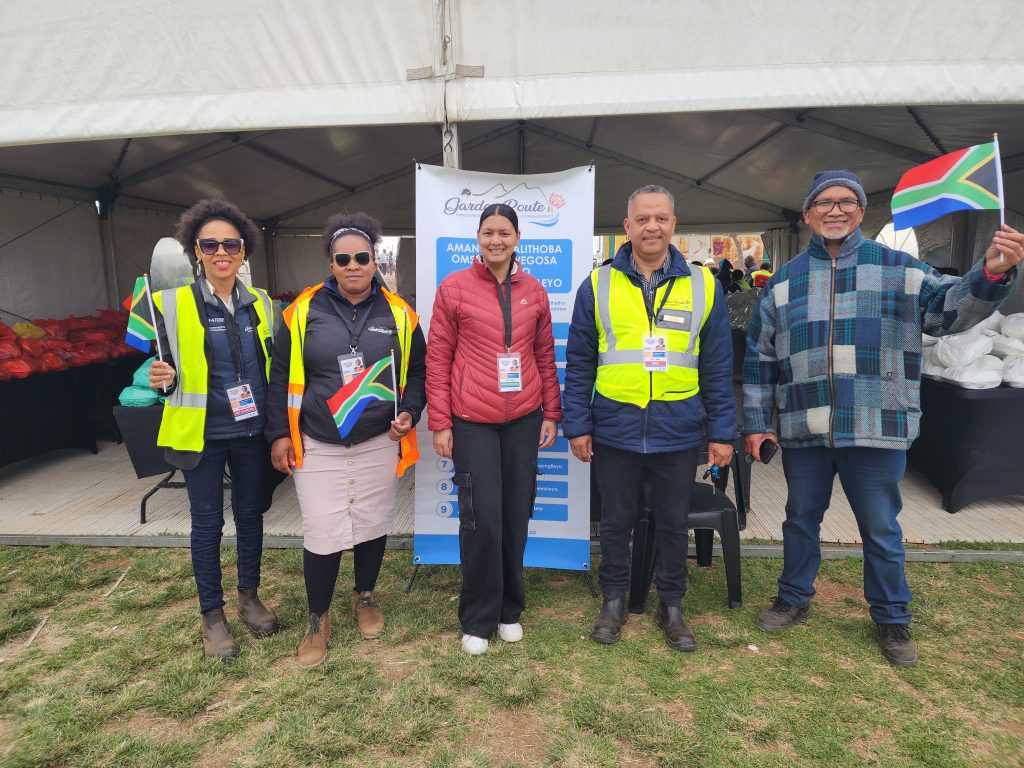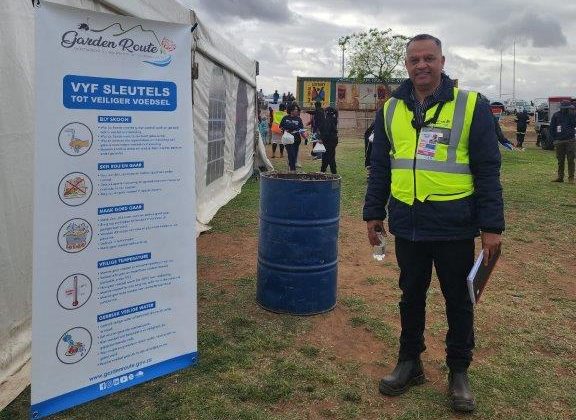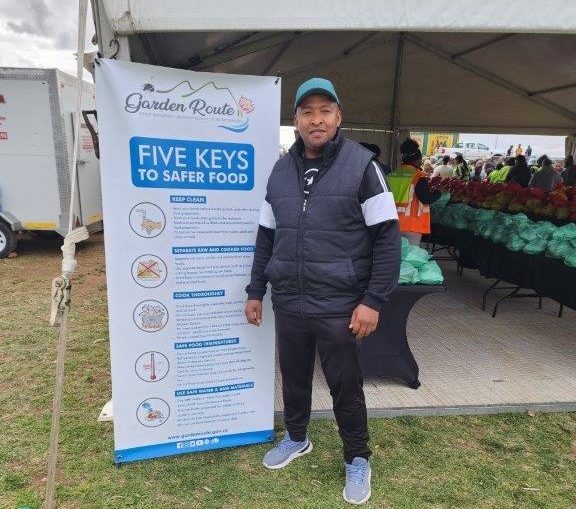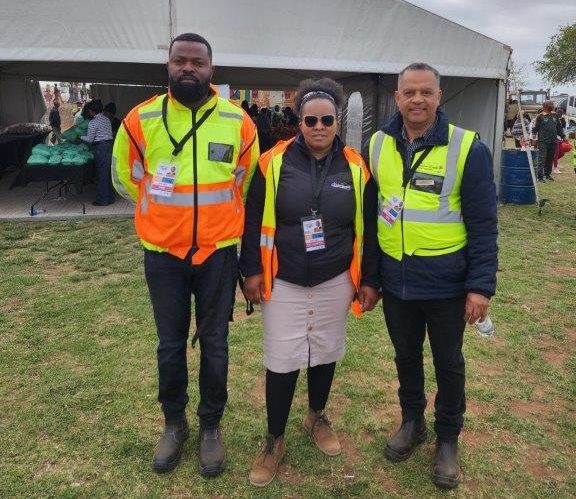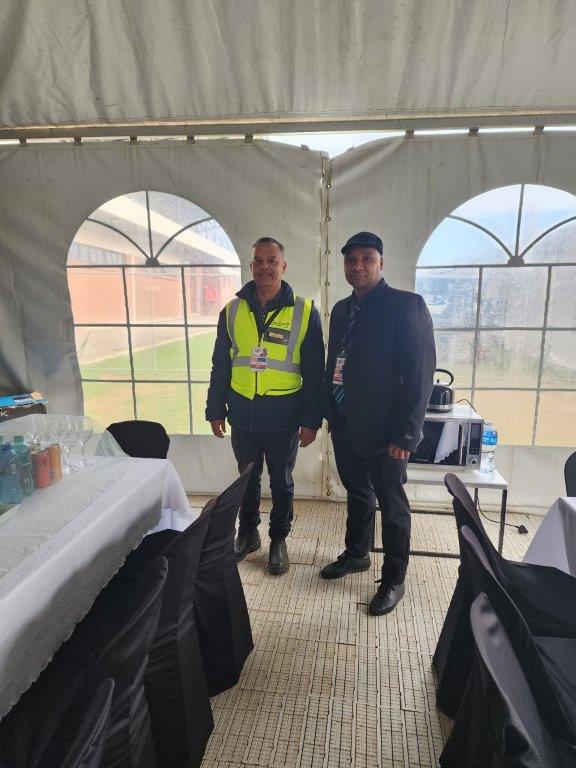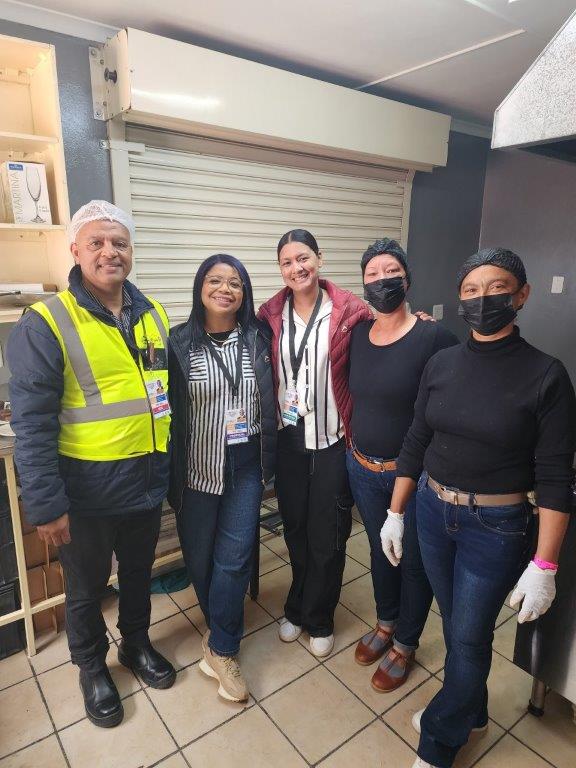29 Media Release: GRDM Environmental Health Practitioners of Oudtshoorn Promote Clean Air and Healthier People during National Heritage Celebrations on 24 September 2025 in Oudtshoorn
Media Release: GRDM Environmental Health Practitioners of Oudtshoorn Promote Clean Air and Healthier People during National Heritage Celebrations on 24 September 2025 in Oudtshoorn
29 September 2025
During the National Heritage Day celebrations in Oudtshoorn on 24 September 2025, attended by Deputy President Paul Mashatile, GRDM Executive Mayor Andrew Stroebel, and other national and provincial ministers, EHPs from the GRDM Oudtshoorn office incorporated the World Environmental Health Day theme, ‘Clean Air, Healthy People,’ into the health promotion activities. They reached a broad audience of approximately 5000 people with vital health and environmental messages.
The attendees at the event included various cultural groups, schools, religious leaders, community leaders, and more. National Heritage Day educational activities, both before and during the celebrations, highlighted the adverse health effects of tobacco use and the importance of smoke-free environments. Awareness efforts emphasized tobacco control and the significance of clean air in promoting respiratory health and preventing pollution-related illnesses. The EHPs health promotional activities encouraged members of the public to adopt healthier lifestyle choices and support initiatives aimed at reducing tobacco consumption and improving air quality, ultimately fostering a healthier and a more sustainable environment for all.
By combining cultural celebration with health education, a joint health education team, including EHPs from GRDM, Community Development Workers (CDW) from Oudtshoorn Municipality, the Event Safety officer, catering unit of the Department of Sport, Arts and Culture, EHPs from the Presidential Medical Unit as well as community leaders and caterers, all work together.
Health education and awareness topics included the following:
- Avoid smoking in buildings, tents and during food preparation, smoke only in demarcated areas;
- Prevent smoke pollution;
- Proper waste management;
- Prevent littering and avoid environmental pollution;
- Consume only drinking water from reputable and safe water sources;
- Practice good sanitation; and
- Ensure hygienic food preparation and food safety.
The VIP guests were treated to a mouth-watering braaivleis lunch that honoured our rich local culinary heritage. The meal was prepared under hygienic conditions in a braai area designed to release smoke without causing smoke pollution in the adjacent Bridgton Secondary school hall, where the guests enjoyed their lunch.
-END-

